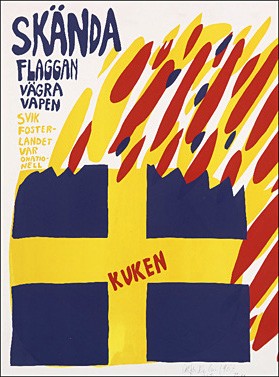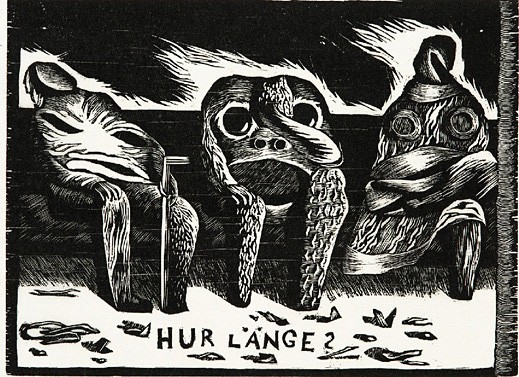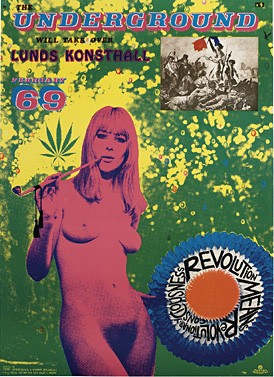
Carl Johan De Geer
Skända flaggan, 1967
© Carl Johan De Geer/BUS 1999
The roaring seventies
After the May-revolt
27.5 1999 – 18.6 1999
Stockholm
The pictures of poster artists Carl Johan and Marie-Louise de Geer put their stamp on the period as did also the work of Sture Johannesson and the ever committed Kerstin Abram-Nilsson. Other artists include Roj Friberg and Petter Zennström, and Öyvind Fahlström (who by then had moved to live in the USA), with his game-like political “map prints”, which focused on themes about capitalism and exploitation. The exhibition contains drawings, graphics and posters from the Museum´s collection.
Curator: Ragnar von Holten
More than 30 years have passed since the student revolt in May 1968, an event which politically and culturally echoed all over Europe. Actually May -68 was the start of a comprehensive – and not always nihilistic – reassessment of most values and of the criteria for how we judge quality.
Apart from all the well-known political and social implications, May 1968 also involved a certain amount of the “airy-fairy”: hippie and drug romanticism, sexual liberation, psychedelic music, happenings and more or less organised theatre productions. In the beginning of the Swedish 70s, there also occurred a political polarisation, rebellion and suppression of opinion – in a way, a kind of Swedish Maoist cultural revolution.
What was most remarkable about this period is, however, the preoccupation with images, the flood of pictures – an unbridled imagination manifested in innumerable posters and underground publications, of which “Puss” is incomparably the richest. Not only did everybody suddenly write poetry, but they also composed pictures – completely new motifs appeared and Sweden abounded in images.
Artists particularly engaged themselves in international politics – the mentality of violence, the deprivation of freedom, the war in Vietnam, sometimes the domination of and assaults committed by the police. However, some people expressed their engagement in other ways – in critical views of relations within Sweden as regards the destruction of nature, materialism, mass culture, disregard for the individual.
The exhibition focuses a great deal on contributors to the magazine Puss – Lars Hillersberg, Ulf Rahmberg and Lena Svedberg. On the periphery of “Puss” are also Carl Johan De Geer and his then wife, Marie-Louise, who, among other things together produced “Aftonsnabeln” (lit. “Evening proboscis”). Carl Johan De Geer is represented, with Sture Johannesson, by a poster that was confiscated by the police: “Skända fanan, vägra värnplikt” (“Desecrate the flag, refuse the draft”) and the Underground poster for Lund´s Art Gallery which was considered to be an advertisement for hashish.
“After the May Revolt” also contains work by Öyvind Fahlström, Berndt Pettersson, Kerstin Abram-Nilsson and Petter Pettersson. The exhibition encompasses about 90 works, all of which are part of Moderna Museet´s collection.


